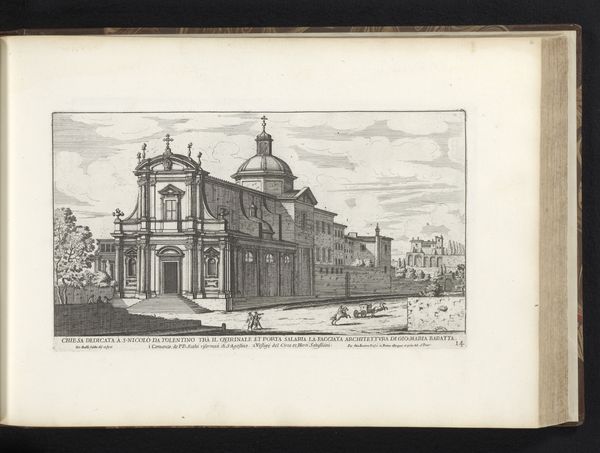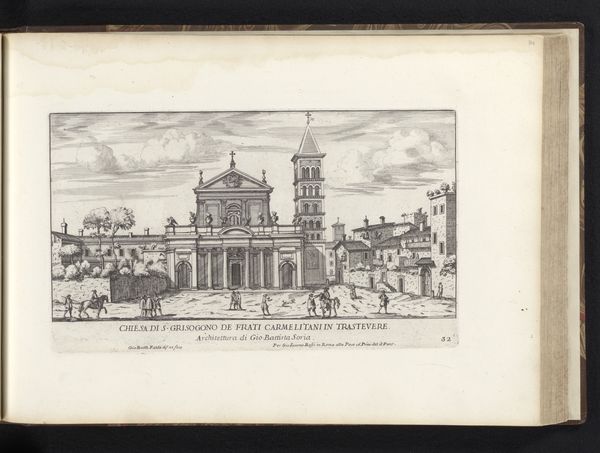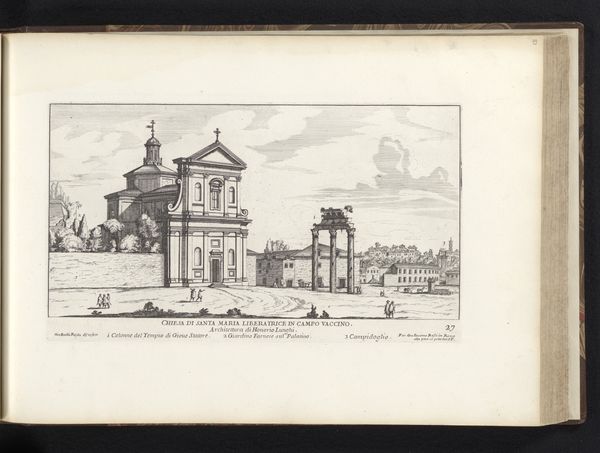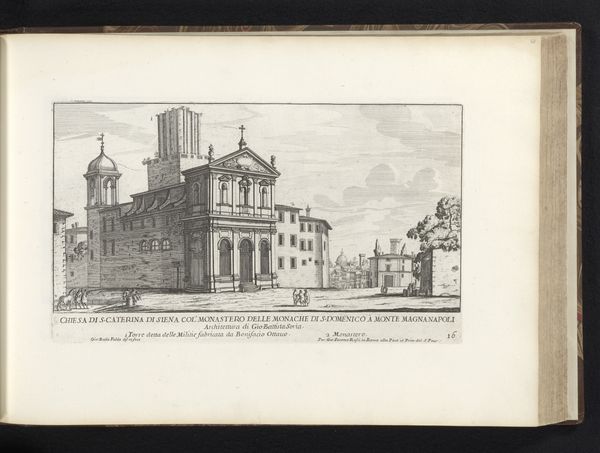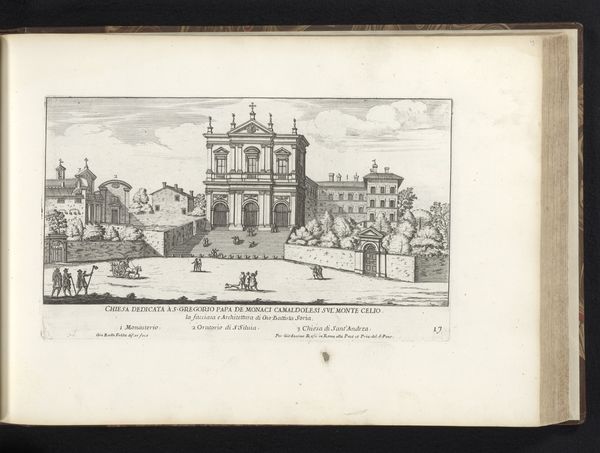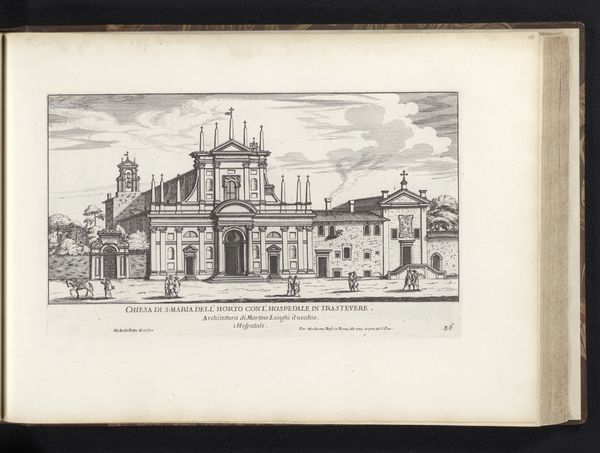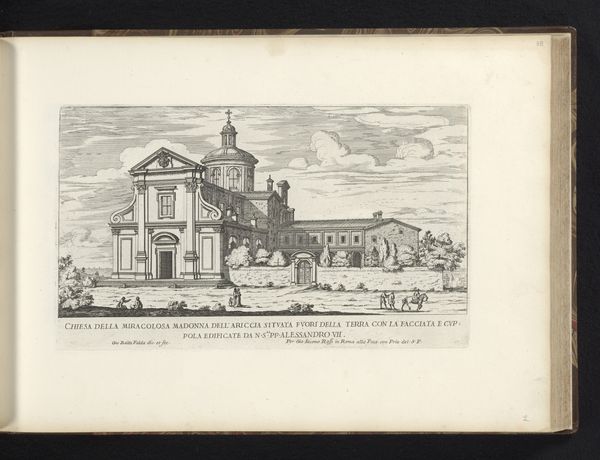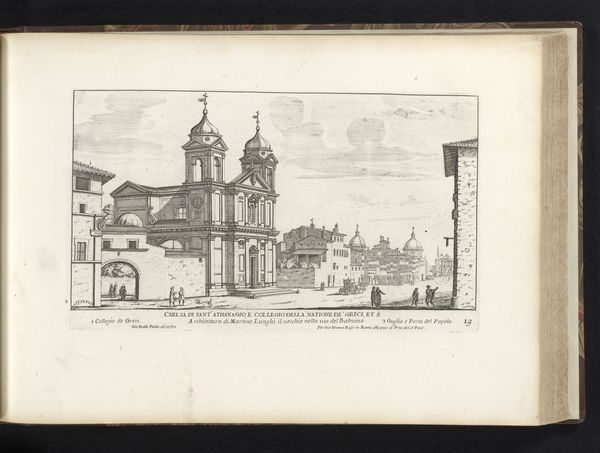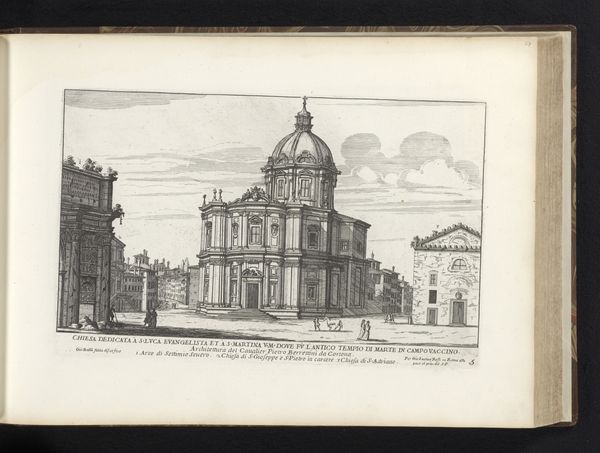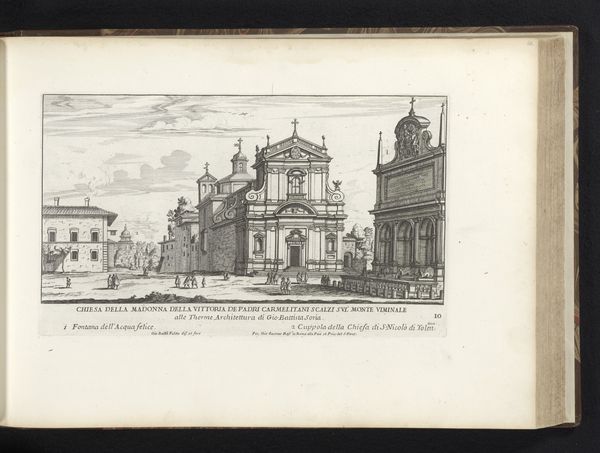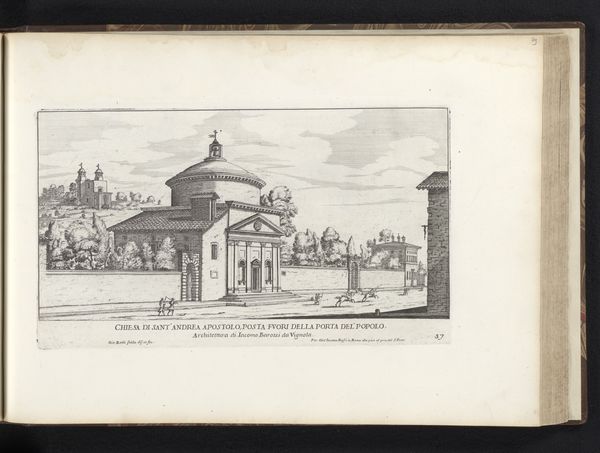
print, engraving, architecture
#
aged paper
#
toned paper
#
baroque
# print
#
old engraving style
#
sketch book
#
personal sketchbook
#
pen-ink sketch
#
pen and pencil
#
line
#
pen work
#
cityscape
#
sketchbook art
#
engraving
#
pencil art
#
architecture
Dimensions: height 174 mm, width 293 mm
Copyright: Rijks Museum: Open Domain
Editor: Here we have Giovanni Battista Falda's "Sint-Anastasiabasiliek te Rome" made around 1669-1670. It's an engraving, so a print, from the Rijksmuseum collection. The detail is impressive, though it's very linear and makes the church feel almost like an architectural blueprint. How do you interpret this work through a formalist lens? Curator: It’s fascinating how the rigorous application of line dictates the composition. Observe the architectural elements; Falda's meticulous hatching and cross-hatching articulate the basilica's facade, defining its planes and volumes. Consider the interplay between light and shadow – how is it conveyed through purely linear means, devoid of tonal variation? Editor: I see that. The stark contrast from the white paper creates the illusion of light, despite the lack of shading. It feels very controlled, almost clinical. Curator: Precisely. The essence of the Baroque, often associated with drama and dynamism, is here distilled into an ordered system of lines. Notice also how the perspective is rendered; does it prioritize faithful representation, or does it serve a more abstract, compositional purpose? Editor: It seems less about replicating reality and more about organizing the elements within the frame, creating a structured viewing experience. Is that part of the formalist idea—that the structure matters more than the subject? Curator: In essence, yes. While the subject - the basilica - holds significance, the formalist approach emphasizes the "how" over the "what." It prompts us to consider the aesthetic decisions inherent in Falda’s artistic method. Editor: That's given me a whole new appreciation for engravings! I was so caught up in what it depicted. I am so eager to learn about this more. Curator: Indeed. By shifting our focus to the internal language of the work, we can engage with it more directly, bypassing the need for external narratives or historical interpretations.
Comments
No comments
Be the first to comment and join the conversation on the ultimate creative platform.
